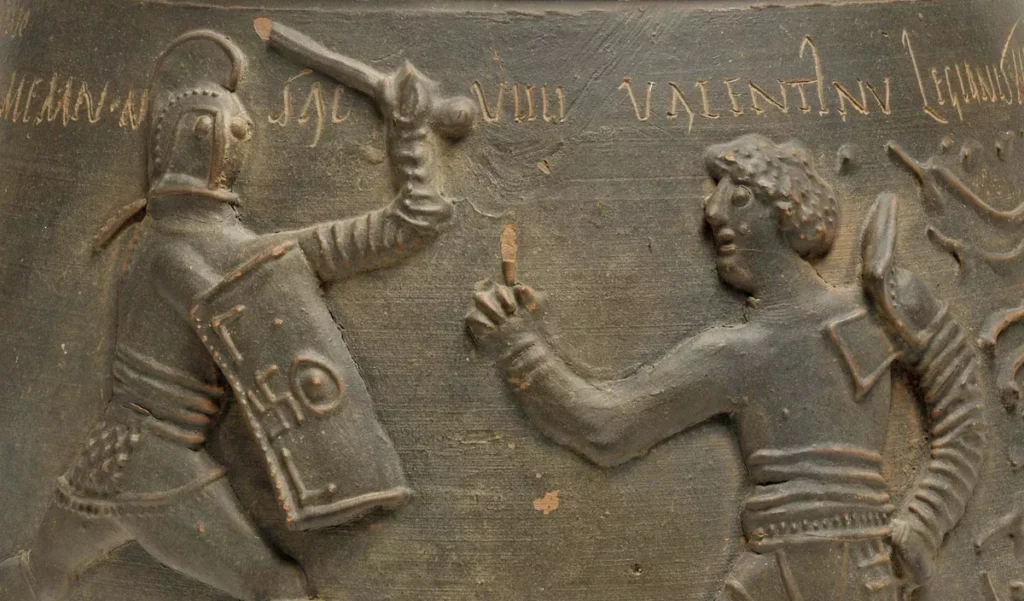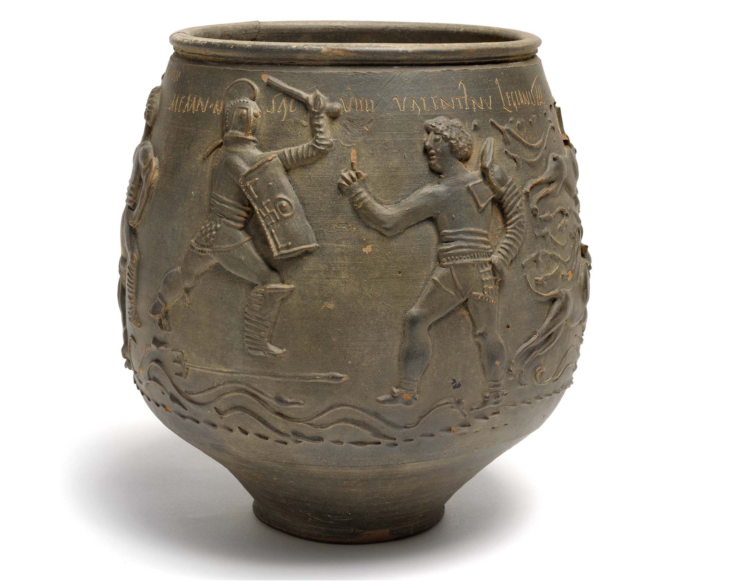A recently analyzed vase is the only representation of an actual gladiatorial contest in Roman Britain. Memnon and Valentinus, two heavily armed gladiators, engaged in vicious combat about 2000 years ago. Yet the location of the game—Colchester, England—had remained a mystery until recently.
Since the discovery of the ceramic jar in 1853, historians have known that Memnon, a former champion, probably black and a slave, won the contest. Next to him is another slave, Valentinus, with his index finger raised to the sky in a gesture of gladiatorial surrender similar to the waving of a white flag.
According to research by archaeologists from several British universities, two gladiators almost certainly met to fight near where the pot was found, in what is now a city in the eastern county of Essex.
Glynn Davis, senior curator at Colchester Museums, said: “This was a total discovery. Now when you look at this vase, you know you are seeing real people on it. They fought here in Colchester, known to the Romans as Camulodunum.”
The vase is thought to date from the late 2nd century. It is the only representation of a genuine gladiator match that took occurred in Roman Britain, according to archaeologists. While there are other artifacts showing that gladiators were present in Britain during the heyday of the empire, none of them depict specific matches being fought.
Archaeologists originally believed that the pot had been transported from another region of the Roman Empire due to the quality of the frieze. The description was etched onto the pot’s surface when the clay was still malleable before it was burnt in a Colchester kiln, according to archaeologists who examined the inscription scratched onto the pot’s surface and its composition. Davis interprets this to suggest that Memnon and Valentinus met nearby for combat. “We are looking at an inscription that could not possibly have been scratched after firing, you can only get T’s and X’s in soft clay. If you tried to do it in fired clay, it would break.”
The findings refuted previous theories that the vase was imported from outside Europe or that it could have been made generically with added features. Instead, the researchers found that the vase was ordered, designed and fired locally. “This can’t have been a generic souvenir,” Davis said.



According to the portrayal on the vase, Memnon had a significant edge in the battle. He was far better armed and armored than his competitor, carrying a sword, a big shield, and a helmet that covered his head entirely save for eyeholes. This was his ninth triumph as a gladiator, according to the inscription.
As Stuff reports, archaeologist John Pearce of King’s College London, who is also involved in the research, says that it is also possible that he was Black and that the nickname of this particular gladiator was derived from both his fighting skills and his skin color.
“He could be a star performer brought a long distance or could himself have been born in Britain to parents from places far to the south who had come to the province as forced or willing migrants.”
“Inscriptions and increasingly analysis of human skeletal remains show us the presence of individuals of Middle Eastern and African geographical origin in Roman period Britain, especially in the province’s cities,” Pearce added.
The referee of the match, who decides whether to show mercy to the losing fighter or order him to be killed, is not depicted on the pottery.
The vase depicts Valentinus, Memnon’s opponent, who looks to be left-handed and armed only with a trident that has fallen to the ground. For safety, he just wears a padded sleeve and a shoulder guard.
Depending on how skillfully the defeated gladiator battled, the crowd may have encouraged Memnon to kill him or cheered in his favor.
One thing we still don’t know, Valentinus’s fate.
